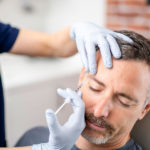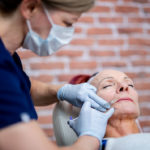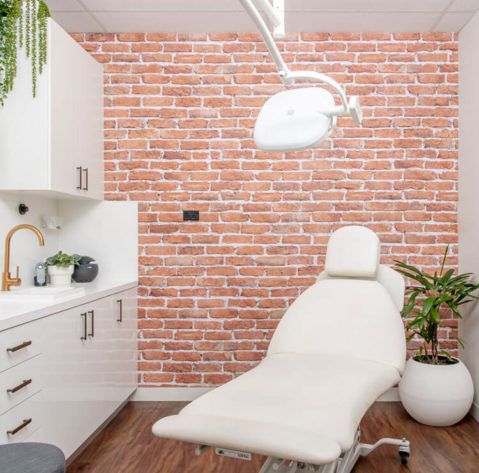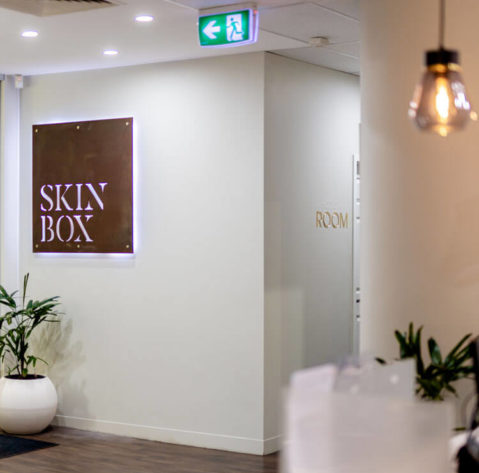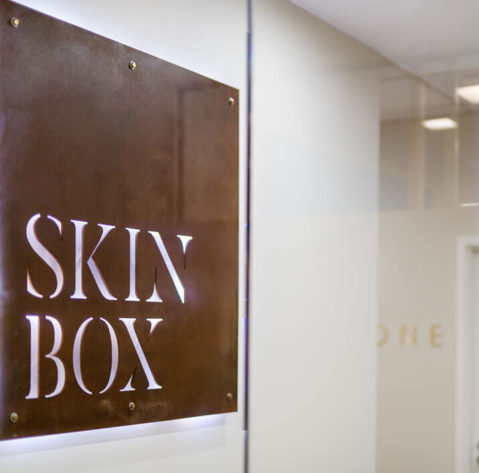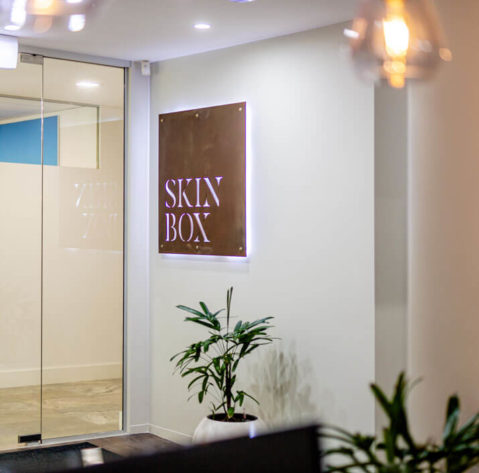Cosmetic injectables
Going beyond addressing dynamic lines with wrinkle treatments, our balanced medical approach to balancing and enhancing the positive features of your face may also include a discussion on the use of gel products.
Certain types of medical gels can be utilised to provide structure and replace the facial volume that diminishes as part of the general ageing process of the face, as well as to define and augment the lips, cheeks and chin.
Lips, cheeks, under eye, chin, jawline, nose.
Lasting 6 months to 2 years.
$600 – $3900
Who is this sort of treatment suitable for?
For adults of all ages, augmentation gels are an excellent tool for those seeking to reshape their features, restore volume to the face, improve age-affected skin, postpone the effects of ageing, or ensure that the message their face is delivering fits with how they feel inside. Men and women from all walks of life have undergone this treatment to help add or restore volume, vitality and aesthetic balance to the face.
At SkinBox, our doctor-only team of injectors have a holistic approach towards beauty. With an emphasis on symmetry, balance and harmony we can enhance facial contours and create your ideal, most aesthetically pleasing facial shape.
The possibilities go beyond just filling a line on the face. By combining advanced injection techniques with the highest quality products and an element of artistry, we aim to not just to “fill” but to highlight your natural beauty, recapture the contours of youth and realise each individual’s aesthetic potential.
In your initial consultation, your doctor will explore your reasons for treatment, as well as your needs, expectations and aesthetic goals. They will explain how the treatment will be performed and the measures we will take to help you achieve your ideal facial profile. Your doctor will work closely with you to create a treatment plan that will allow you to enjoy a refreshed, smoother profile for longer.
As a holistic skin clinic, we can explore a total face enhancement plan that can also include skincare, dermal therapy treatments or laser resurfacing if necessary.
Tap into our medical expertise
We understand that the world of aesthetics and cosmetic treatments can be intimidating, that’s why our cosmetic doctors and qualified dermal therapists are here.
To share our medical knowledge.
To help you look and feel your best.
Where can medical gel products be used?
Our natural ageing process causes changes to the elastin and collagen in the face, contributing to the formation of folds and wrinkles. As our face gradually loses its volume and youthful contour, we can sometimes develop a prematurely aged and tired look. Medical gels are used to both correct and postpone signs of ageing, as well as for beautification of a single feature in younger adults.
Medical gels are most commonly used to:
- Rejuvenate mature lips, which lose volume and become thinner with time.
- Enhance younger lips for a plumper, more defined overall outline, or a more balanced proportion.
- Suppress the overactivity of the upper lip muscles that can cause a gummy smile, reducing the amount of gum that shows whilst maintaining a natural-looking smile.
- Support and lift downturned lip corners (the marionette fold) which can portray a sad or even angry appearance.
- Smooth out lines around the lips (smoker’s lines), which may cause lipstick to bleed.
- Soften cheek folds (nasolabial folds) and elevate cheeks that have sagged and lost volume over time, for a fuller, more youthful profile.
- Lighten hollows under the eyes (tear troughs) to reduce a tired or stressed appearance and to give a more well-rested look.
- Strengthen and sculpt the chin and jawline to give a more balanced or contoured profile.
- Subtly reshape the nose for a more flattering and proportionate shape and size.
FAQ’s about Medical Gels
Why use medical gels?
The natural ageing process can cause changes to the curves and contours of your face due to volume loss. Areas prone to volume loss include the cheeks, lips, brows, temples and jawline. One of the first noticeable signs of facial ageing is the development of the “naso-labial fold” – the fold of skin that runs from the edge of the nose to the corner of the mouth. This is formed when the fat and soft tissue that normally sits high on our cheeks starts to lower.
This is often combined with the formation of “tear-troughs” – areas of volume loss under the eyes. This is where medical gels can help.
The lips are a key focus point when communicating and especially in terms of attraction. Over time, the outer layer of the lip becomes thinner and the corners of the mouth can drop. The V-shaped are of the upper lip, known as the Cupid’s Bow, begins to flatten out and our lips become elongated and lose their youthful fullness. These static lines and areas of volume loss can be addressed using injectable gels.
What are medical gels made from?
There are a number of different products available in Australia. The most commonly used and popular temporary gels are those made from a naturally occurring sugar complex. Found within the tissues of living cells, including human skin, this sugar complex assists in skin hydration by attracting and holding water. It combines with collagen and elastin to help provide skin structure and elasticity.
Within a range of gel products each will have different properties of thickness, rigidity, and tissue integration to enable tailoring of the treatment for each individual. An effect can be seen immediately following treatment, but typically full results are seen at 2-4 weeks. The brands we most commonly use at SkinBox Clinics consist of a range of products that last for 9-24 months.
Another common choice is a collagen-stimulating product. In addition to addressing wrinkles and folds, this type of substance uses the body’s natural response to stimulate collagen production for long-lasting, natural-looking results. This type of product contains tiny particles (microspheres) of a substance that has been used for many years in medical applications such as absorbable sutures. The microspheres are evenly distributed within a carrier gel, which fills the areas of skin affected by volume loss.
Over the course of a few months, the smooth microspheres stimulate your body’s natural collagen production. As the microspheres are broken down by the body, these collagen structures are left behind and continue to fill and provide volume to the skin. This bio-stimulant product can be used in most facial areas other than the lips and results can last for more than 4 years.
Is there any pre-treatment advice when having treatment with medical gels?
To minimise potential side-effects, pre-treatment advice will be discussed at your initial consultation appointment. It is important that you do not attend for a procedure appointment if you are unwell on the day. Please call us to rearrange your appointment if you are unwell.
It is very important that you do not have any dental work in the 2 weeks prior and following your procedure appointment, to minimise the risk of infection.
We also advise you not to have any form of vaccination in the 3 weeks before your procedure appointment, or in the 2 weeks afterwards.
Read our cancellation policy
What does a treatment with a medical gel involve?
This form of cosmetic injectable treatment is a non-surgical procedure. As with any injection there may be some slight discomfort, which varies from one person to another and depends upon which product is being used and what area is being treated.
It is incredibly important that your facial skin is clean and entirely free of makeup. For your convenience, we offer an optional Comfort Package add-on to our procedure appointments. This involves a professional double cleanse by one of our Dermal Therapists prior to your treatment, and a Healite II® LED session immediately after your treatment to assist in calming any inflammation and minimising bruising. Please let us know when booking your appointment if you would like to add this.
Local anaesthetic cream is applied to the skin prior to treatment. Local anaesthetic is also included in the injection of the product, which has been shown to improve comfort and simplify the treatment as a separate anaesthetic injection is not usually necessary.
The procedure may take 15-45 minutes and you should generally be able to resume normal activities upon leaving. It is recommended that you do not apply make-up for 12 hours following your treatment and that you avoid lengthy exposure to the sun, UV rays and extreme temperatures for 2 weeks. Further aftercare will be discussed will you at your initial consultation if appropriate.
Many patients notice that once they have had a non-surgical aesthetic injectable treatment their friends, colleagues and family notice a difference, but can’t put their finger on what has changed. Treatment with these medical gels is a subtle enhancement, rather than a radical change.
What are the possible side-effects of medical gels?
As with all medications, side effects can occur, although most patients do not experience any at all.
Reported side effects of medical gels include redness at the injection site, pain, firmness, swelling, lumps & bumps, bruising, itching or discolouration.
In the most cases side effects are temporary and should resolve within a week. There are certain steps you can take prior to your procedure to minimise the risk of bruising, and these will be discussed with you at your initial consultation. We also have various techniques to speed up the resolution of bruising when it does occur and it is recommended that you follow the aftercare advice provided with your procedure.
Injection of any sort of gel product in any area of the face carries an incredibly small (but very serious) risk of permanent blindness, stroke and death. It is vitally important that your non-surgical aesthetic procedure is performed by an experienced medical practitioner. Our doctors are fully trained in injection techniques in order to minimise this risk.
It is also important that your procedure is carried out on medical premises that carry appropriate emergency equipment, with staff available who have been trained in how to use this.
How long do the results last?
The longevity of injectable medical gels varies from person to person. It depends how quickly your body metabolises (breaks down) the product, and where the product is placed. The range of gels that we most commonly use at SkinBox Clinics produce results can last from 6 months to 2 years, although maintenance or top-up treatment can be done during this time in order to minimise obvious changes in your appearance.
Why can’t I find out more specific information about which brands and products you use at SkinBox?
We appreciate that the majority of our patients like to do significant amounts of research prior to coming in for an initial consultation, and it is likely that you are here seeking to understand these procedures more fully before committing the time to come in and meet with us in person. Unfortunately, the Australian Government have strict regulations about the “advertising” of cosmetic surgical and non-surgical procedures and of prescription medications. We are not legally allowed to state which brands of products we use, or give anything other than vague generalised information that is restricted in its educational content. This is because these treatments are individualised medical procedures that can only take place after an appropriate consultation between patient and medical practitioner.
We sincerely apologise for the inconvenience and frustration that this may cause, and assure you that as a medical clinic we adhere to all legal regulations and guidelines relating to your safety and outcomes.
